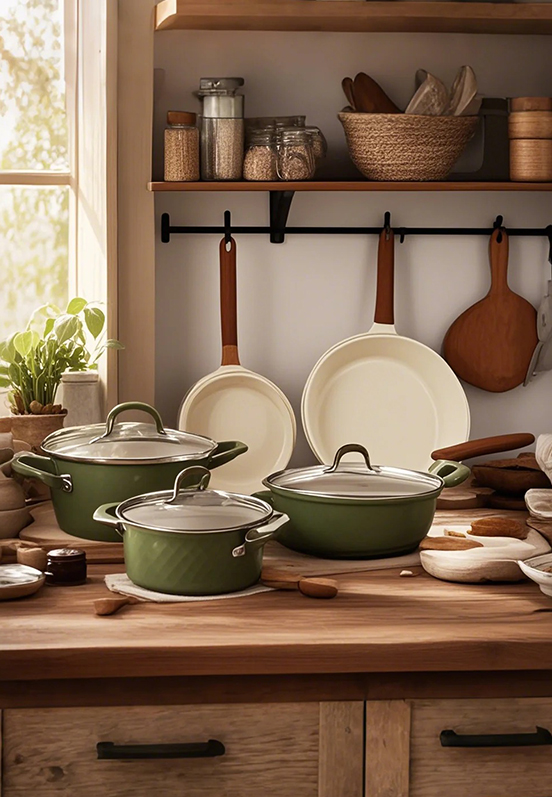2025-08-29
Non-stick kitchen pans have continued to gain attention in the cookware market, appealing to home cooks and culinary professionals who value convenience and efficient food preparation. Designed with coatings that reduce food adhesion, these pans make cooking and cleaning easier while supporting a variety of meal styles, from quick breakfasts to more involved recipes.

A notable feature of non-stick kitchen pans is their ability to reduce the need for additional oils or fats during cooking. This characteristic aligns with the preferences of individuals seeking to prepare lighter meals without sacrificing flavor or texture. The reduced use of cooking oils not only benefits health-conscious consumers but also contributes to simplified cleaning, as food residue is less likely to cling to the pan’s surface.
The coatings used on non-stick kitchen pans have evolved over time. Modern manufacturing techniques have improved the durability of these coatings, allowing them to withstand regular use without losing their non-stick qualities quickly. While proper care remains essential — such as avoiding metal utensils and high heat — many current options are designed to maintain performance for extended periods, making them suitable for both occasional and frequent use.
Versatility is another reason for the growing presence of non-stick kitchen pans in households. They are available in a range of sizes and styles, including frying pans, sauté pans, and specialty cookware like crepe pans. This variety enables cooks to choose pieces that suit their specific needs, whether for single-serving meals or larger dishes prepared for family gatherings. Their compatibility with various stovetops, including gas and electric, further enhances their practicality in different kitchen environments.
Lightweight construction is also a key benefit of non-stick kitchen pans. Compared to materials like cast iron, these pans are easier to maneuver, making them ideal for quick tasks such as flipping pancakes or stir-frying vegetables. The manageable weight appeals to individuals who cook frequently and prefer tools that do not strain their wrists during extended use.
In addition to functionality, non-stick kitchen pans often feature modern designs that complement contemporary kitchen aesthetics. Many products are crafted with ergonomic handles and sleek finishes that combine comfort and style. This attention to both performance and appearance reflects a broader trend in kitchenware, where visual appeal is increasingly valued alongside practicality.
While the benefits of non-stick pans are well recognized, proper maintenance plays a crucial role in extending their lifespan. Recommendations include handwashing instead of dishwashing, using gentle cleaning tools, and storing them in a way that avoids scratches. Following these practices helps preserve the coating and ensures consistent cooking results over time.
The growing preference for non-stick kitchen pans is also influenced by lifestyle changes. More people cook at home, particularly in urban settings where convenience is important, and cookware that simplifies meal preparation is becoming more sought after. Non-stick pans meet this demand by reducing cooking times and minimizing post-meal cleanup, supporting busy schedules without compromising on food quality.
Looking ahead, manufacturers are likely to continue refining non-stick technology, with an emphasis on longer-lasting coatings and materials that address environmental and safety considerations. Innovations in these areas may further strengthen the role of non-stick kitchen pans as essential tools in modern kitchens.
In conclusion, non-stick kitchen pans provide a practical solution for individuals and families seeking ease and efficiency in cooking. Their combination of reduced oil usage, straightforward cleaning, and broad adaptability to different cooking methods makes them a reliable choice for daily meal preparation.